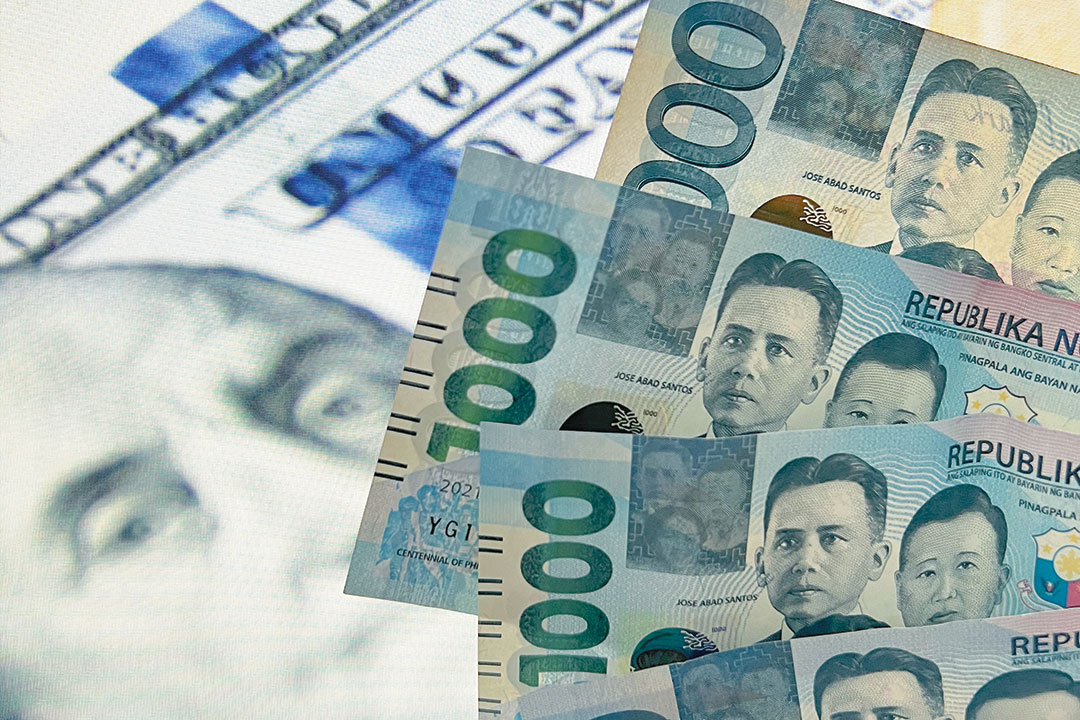Peso rebounds as US slowdown fears hit dollar

THE PESO rebounded against the dollar on Tuesday as recession fears in the United States weighed on the greenback.
The local unit closed at P57.225 per dollar on Tuesday, strengthening by 18.5 centavos from its P57.41 finish on Monday, Bankers Association of the Philippines data showed.
The peso opened Tuesday’s session weaker at P57.45 against the dollar, dropping to as low as P57.50 intraday, reflecting market volatility. Meanwhile, its intraday best was at P57.20 versus the greenback.
Dollars exchanged rose to $1.38 billion from $815.69 million on Monday.
“The peso closed higher as the market reacted to concerns over the US economy due to softer US data recently and the appreciation of European currencies,” a trader said in a phone interview.
The yen was investors’ safe harbor of choice on Tuesday and it touched a five-month high as fears about a tariff-driven slowdown in US economic growth have rattled US stocks and the dollar, Reuters reported.
The Nasdaq fell 4% overnight and the S&P 500 slid 2.7% as equities caught up with what bonds and currencies have been saying for weeks: US growth is going to slow down.
The yen made a five-month peak of 146.55 per dollar before steadying around 147.24. China’s yuan also rose, ticking 0.2% higher to 7.2426 per dollar.
Other moves in the foreign exchange market were more muted, and analysts noted that a lot of the shifts in currencies had already happened. The dollar is down more than 7% from a six-month high it hit in January versus the yen and the greenback’s apparently dulled luster as a safe-haven coincides with a big rally in the euro and a broader re-think of how tariffs and a trade war play out in foreign exchange markets.
The risk-sensitive Australian dollar was a modest loser on Monday and loitered around its 50-day moving average at $0.6266 on Tuesday. Sterling was holding on above its 200-day moving average at $1.2875 and the euro was steady just above $1.08.
The Canadian dollar and Mexican peso are actually stronger since US President Donald J. Trump hit the two countries with 25% tariffs. Europe’s common currency is riding high on German plans to borrow and spend on defense and infrastructure.
The turmoil in equities was triggered by a Trump Fox News interview, in which the president talked about a “period of transition,” dashing investor bets he would back away from his aggressive policies.
The dollar index, however, had a hard time rallying and was mostly flat as small rises against the Aussie and sterling were offset by losses on the yen, leaving it at 103.8.
Meanwhile, the peso was also supported by the recent decline in global crude prices, Rizal Commercial Banking Corp. Chief Economist Michael L. Ricafort said in a Viber message.
Oil prices fell for a second day on Tuesday on worries that US tariffs would slow economies around the world and hurt energy demand while OPEC+ ramps up its supply, Reuters reported.
Brent futures fell 0.65% to $68.83 a barrel, while US West Texas Intermediate crude futures lost 0.82% to $65.49 a barrel.
For Wednesday, the trader expects the peso to move between P57.10 and P57.50 per dollar, while Mr. Ricafort sees it ranging from P57.10 and P57.30. — AMCS with Reuters



